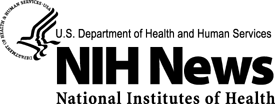| Statement of Anthony S. Fauci, M.D., Director,
National Institute of Allergy and Infectious Diseases, National
Institutes of Health, on National Native HIV/AIDS Awareness Day,
March 20, 2008
Today, on the second annual National Native HIV/AIDS Awareness
Day, we reflect on the significant toll of HIV/AIDS on native people,
including American Indians, Alaska Natives and Native Hawaiians.
The estimated rate of HIV/AIDS diagnoses for American Indians and
Alaska Natives in 2005 was 18 percent higher than the rate for
whites.1 In the same year, women in
those native groups had two and a half times the estimated HIV/AIDS
case rate of white women.1 An estimated
3,238 American Indians and Alaska Natives in the United States
have been diagnosed with AIDS since the epidemic began, and the
time between AIDS diagnosis and death is shorter for American Indians
and Alaska Natives than for any other U.S. racial group.1 Moreover,
Native Hawaiians represent a significant proportion of the people
in Hawaii who have been diagnosed with HIV/AIDS.2
The National Institute of Allergy and Infectious Diseases, part
of the National Institutes of Health, joins with native communities
in mourning those who have died from AIDS and salutes the individuals
who assist people living with HIV in these communities and who
provide the services needed to help prevent further infections.
Many native people already face significant health challenges
because of higher poverty rates than those of the general U.S.
population; limited access to health care in rural areas; and,
in some settings, high rates of diabetes, obesity, and social and
behavioral risk factors for acquiring HIV.3 These
risk factors include sexually transmitted infections, sexual activity
among teenagers, domestic violence and substance abuse.3 For
example, among female American Indians and Alaska Natives in 2005,
injection drug use or sex with an injection drug user accounted
for 30 percent of reported HIV cases and 43 percent of reported
AIDS cases — rates at least 65 percent higher than those
for American women overall.1 When possible,
incorporating HIV/AIDS prevention messages into intervention programs
for these other health issues confronting native communities should
be considered.
Another challenge to preventing HIV/AIDS in native communities
is the significant stigmatization of men who have sex with men,
which likely discourages many men from getting tested for HIV and
seeking counseling and treatment.3 Delaying
HIV testing and treatment places these men at increased risk for
becoming extremely sick and for spreading the virus further. In
2005, more than 63 percent of reported cases of AIDS in male American
Indians and Alaska Natives were attributed to male-to-male sexual
contact or male-to-male sexual contact with concomitant injection
drug use.1 These data underscore the
importance of efforts by native communities — and indeed
all communities — to overcome this stigma by promoting the
acceptance of all people.
Native cultural traditions also may play an important role in
HIV treatment for many native people. It has been suggested that
incorporating cultural healing practices into HIV treatment plans
promotes trust between patient and caregiver and adherence to treatment
regimens.3 Given the very limited number
of Native American health care professionals, the National Native
American AIDS Prevention Center has created a medical provider
training program to convey culturally relevant information to non-native
health care providers of native HIV/AIDS patients.4 The
extraordinary diversity among the 561 federally recognized tribal
groups in the United States makes it likely that the successful
development of culturally sensitive approaches to HIV/AIDS prevention
and treatment will also involve collaboration with the specific
native communities that individual health care providers serve.3,5
On this commemorative day, we as a nation must examine ways to
reduce the burden of disease, including HIV/AIDS, on native people.
I encourage native communities to continue addressing the problems
of stigma and substance abuse that exacerbate the HIV/AIDS epidemic
wherever they occur. And I urge health care professionals to consider
native traditions when providing care to HIV-infected American
Indians, Alaska Natives and Native Hawaiians.
- CDC. 2007. HIV/AIDS Surveillance Report, 2005 Vol.
17. Rev ed. Atlanta: U.S. Department of Health and Human Services,
CDC: 12, 14, 25, 39, 43, 45.
- Hawai‘i State Department of Health. 2008. HIV/AIDS
Epidemiology in Hawai‘i. Accessed March 12, 2008.
- Hamill and Dickey. 2005. Cultural Competence: What
is Needed in Working with Native Americans with HIV/AIDS? Journal
of the Association of Nurses in AIDS Care 16(4):64–69.
- National Native American AIDS Prevention Center. 2007. Medical
Provider Training. Accessed March 11, 2008.
- U.S. Department of the Interior, Bureau of Indian Affairs.
2007. Indian entities recognized and eligible to receive services
from the United States Bureau of Indian Affairs. Federal
Register 72(55):13648–13652.
Dr. Fauci is director of the National Institute of Allergy
and Infectious Diseases at the National Institutes of Health
in Bethesda, Maryland.
Visit AIDS.gov for comprehensive
government-wide information on HIV/AIDS. Information about prevention,
treatment and clinical trials is available at http://www.aidsinfo.nih.gov/.
Media inquiries can be directed to the NIAID Office of
Communications at 301-402-1663, niaidnews@niaid.nih.gov.
NIAID is a component of the National Institutes of Health. NIAID
supports basic and applied research to prevent, diagnose and treat
infectious diseases such as HIV/AIDS and other sexually transmitted
infections, influenza, tuberculosis, malaria and illness from potential
agents of bioterrorism. NIAID also supports research on basic immunology,
transplantation and immune-related disorders, including autoimmune
diseases, asthma and allergies.
The National Institutes of Health (NIH) — The Nation's
Medical Research Agency — includes 27 Institutes and
Centers and is a component of the U.S. Department of Health and
Human Services. It is the primary federal agency for conducting
and supporting basic, clinical and translational medical research,
and it investigates the causes, treatments, and cures for both
common and rare diseases. For more information about NIH and
its programs, visit www.nih.gov.
|

